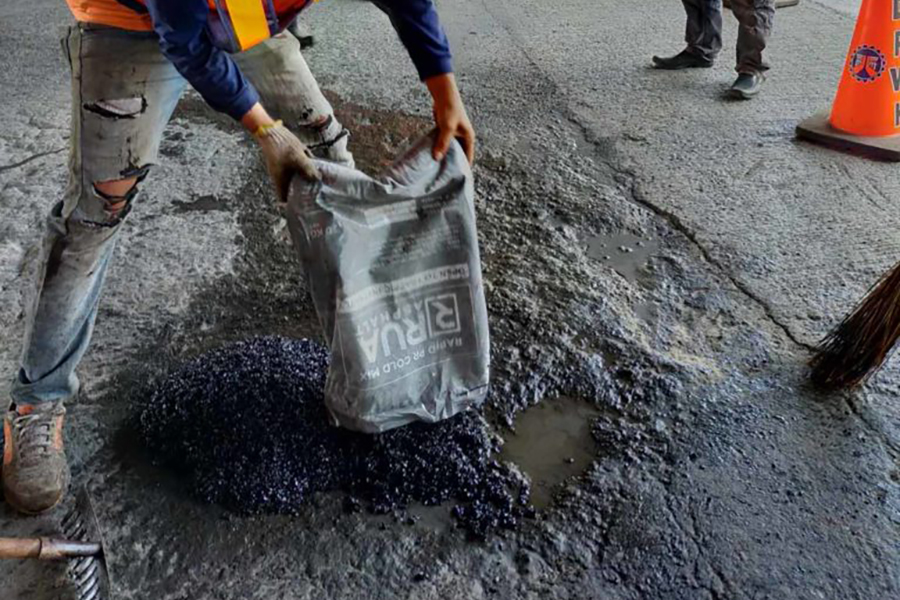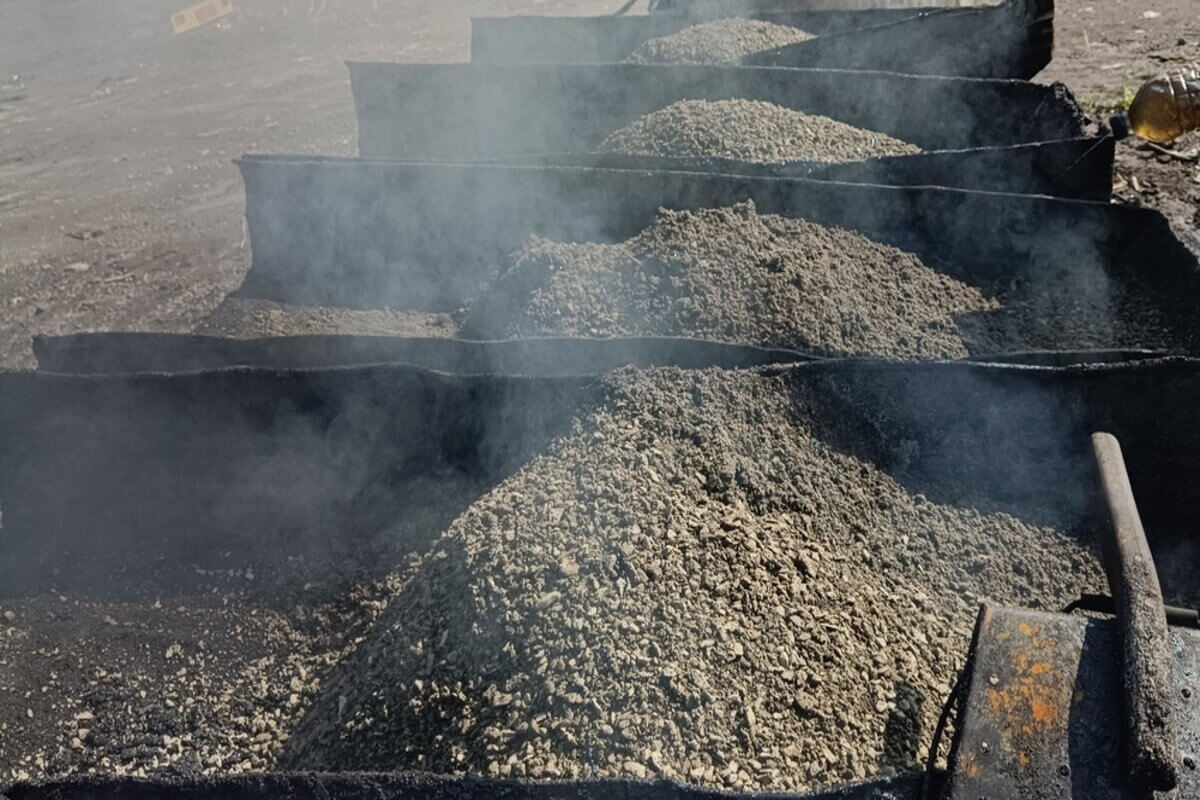Hot Mix Asphalt: The Foundation for Safe and Secure Angled Parking Lots
Hot Mix Asphalt: The Foundation for Safe and Secure Angled Parking Lots
Blog Article
Unlocking the Tricks of Hot Mix Asphalt Innovation
Discovering the depths of warm mix asphalt modern technology discovers a world where careful processes and accurate formulations merge to shape our roadways and facilities. The fusion of binders, fillers, and aggregates isn't just a building task however a tactical orchestration of resilience and performance.
Significance of Warm Mix Asphalt
Warm Mix Asphalt plays a crucial role in contemporary framework growth due to its durability and cost-effectiveness. As the most typically utilized paving material for roads, highways, and auto parking whole lots, Hot Mix Asphalt offers a range of benefits that contribute to its significance in building tasks.
The toughness of Warm Mix Asphalt originates from its make-up, which consists of accumulations, binder, and filler materials that are thoroughly chosen and mixed to meet specific performance needs. This specific mix leads to a versatile and strong sidewalk that can withstand constant usage without considerable damage. Hot Mix Asphalt is 100% recyclable, additional improving its sustainability and environmental advantages. Generally, the significance of Warm Mix Asphalt in framework advancement can not be downplayed, as it remains to be a foundation of modern-day building and construction practices.
Elements of Asphalt Mixes
The structure of asphalt mixes contains carefully selected accumulations, binder, and filler products that are crucial for achieving specific efficiency demands. Aggregates are the key component of asphalt mixes, supplying strength and security. These aggregates can be all-natural, such as crushed rock or crushed stone, or artificial, like recycled materials from old sidewalks. The binder, typically bitumen or asphalt cement, holds the accumulations together and provides flexibility and toughness to the mix. The option of the binder is important as it straight influences the mix's performance in various climate condition. Fillers, such as moisturized lime or Rose city concrete, are made use of to enhance the mix's workability and aging resistance. Angled Parking.
The mix and percentage of these elements play a substantial function in determining the quality and efficiency of the asphalt mix. Designers carefully make the mix to fulfill specific needs, thinking about elements like web traffic quantity, climate problems, and sidewalk lifespan. Correct choice and harmonizing of accumulations, binder, and fillers are crucial for producing long lasting, resilient asphalt pavements.
Mixing and Manufacturing Methods

As soon as the accumulations are picked, the binder, often asphalt cement, is contributed to bind the materials together. The binder's quality and amount significantly impact the mix's adaptability, resistance, and stamina to environmental factors. Additionally, fillers like hydrated lime or Rose city cement might be integrated to enhance particular qualities of the asphalt mix, such as its workability or wetness resistance.
During production, the accumulations and binder are heated up, generally in between 250-325 ° F(121-163 ° C ), to assist in mixing and make certain proper finish of the aggregates. The mixing process must look at here now be extensive to achieve an uniform mix that promotes the wanted efficiency attributes of the asphalt. Numerous methods, such as set mixing or drum blending, are used to attain high-grade and constant asphalt blends for building and construction jobs.
Aspects Affecting Asphalt Performance
Aspects affecting asphalt efficiency incorporate a variety of variables that affect the longevity, durability, and overall quality of asphalt sidewalks. One vital factor is the quality of products used in the asphalt mix. The kind and resource of accumulations, the binder high quality, and the additives all play a considerable role in identifying the efficiency of the asphalt pavement. The rank of accumulations is important as it affects the mix's resistance, workability, and stability to rutting and fracturing.

Layout considerations, such as sidewalk thickness and water drainage, are necessary in ensuring the lasting performance of the asphalt sidewalk. By thoroughly taking into consideration these designers, specialists and variables can optimize asphalt efficiency and enhance the service life of sidewalks.
Sustainable Practices in Asphalt Technology

Furthermore, the growth of warm-mix asphalt (WMA) technologies has gotten grip in recent years. WMA enables the manufacturing and positioning of asphalt blends at lower temperatures contrasted to traditional hot-mix asphalt, leading to minimized this energy intake and greenhouse gas emissions. The use of permeable asphalt blends can aid minimize stormwater runoff concerns by allowing water to penetrate with the pavement and right into the ground, promoting all-natural water purification and recharge procedures. By carrying out these lasting techniques, the asphalt industry can contribute to developing a much more eco-friendly and resistant infrastructure network.
Conclusion
In conclusion, hot mix asphalt innovation plays a critical function in modern facilities growth as a result of its resilience and cost-effectiveness. By carefully stabilizing parts, using correct blending strategies, and considering various elements, designers can produce top quality asphalt blends that hold up against rush hour tons and harsh climate condition. Embracing sustainable techniques, such as using recycled products and warm-mix modern technologies, additionally enhances the environmental friendliness of asphalt innovation.
Blending and production methods in hot mix asphalt modern technology include the specific mix and processing of aggregates, binder, and fillers to create a high-performance and resilient asphalt mix.Elements influencing asphalt performance incorporate a range of variables that influence the longevity, durability, and general quality of asphalt sidewalks. Lasting techniques in asphalt innovation incorporate various efforts aimed at lowering the ecological impact of asphalt production and paving procedures. By integrating reclaimed asphalt sidewalk (RAP) and recycled asphalt shingles (RAS) into new asphalt blends, the industry can significantly decrease the usage of raw materials and power, while likewise decreasing land fill waste.
WMA enables for the manufacturing and placement of asphalt blends at lower temperature levels compared to traditional hot-mix asphalt, resulting in reduced power consumption and greenhouse gas emissions.
Report this page